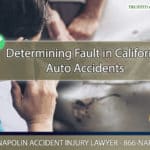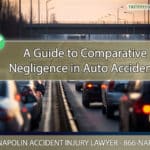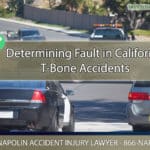Posts Tagged ‘insurance negotiations’
Essential Advice to Protect Your Workers’ Compensation Claim in Ontario, California
The aftermath of a workplace injury can leave you navigating a complex labyrinth of legal procedures and rights you may not initially understand. It’s imperative to arm yourself with knowledge about the processes and protections provided under California’s workers’ compensation laws. This article offers detailed guidance to help you understand and navigate the claims process…
Read More...The Effect of Secondary Injuries on Ontario, California Workers’ Comp Claims
In the realm of workers’ compensation in California, understanding the intricacies of how secondary injuries impact claims is crucial for both employees and employers. Secondary injuries, which occur as a result of or during the recovery from the primary injury, can significantly complicate the claims process. This article delves into the nuances of secondary injuries…
Read More...The Process of Determining Fault in Ontario, California Auto Accidents
In California, determining fault after an auto accident is a critical step that influences the legal and insurance outcomes for all parties involved. The state’s approach to fault determination is grounded in the principle of comparative negligence, which allows for a detailed examination of each party’s actions leading up to the accident. This process is…
Read More...A Guide to Comparative Negligence in Ontario, California Auto Accidents
In the bustling streets of California, auto accidents are an unfortunate reality that many face. The aftermath of these incidents often leads to complex legal battles, especially when determining the responsibility of each party involved. California’s comparative negligence system plays a pivotal role in these determinations, affecting the compensation that injury victims can receive. This…
Read More...A Guide to California Personal Injury Case Negotiations
Navigating personal injury cases in California requires a deep understanding of state-specific laws and regulations. These cases often involve intricate legal nuances that can significantly impact the outcome for injury victims. This guide aims to provide a thorough overview of the key aspects of personal injury case negotiations in California, offering valuable insights for those…
Read More...Determining Fault in Ontario, California T-Bone Accidents
T-bone accidents, also known as side-impact collisions, present unique challenges in the realm of personal injury law, particularly in California. These accidents often result in severe injuries and substantial damages, making the determination of fault a critical aspect for victims seeking legal redress. In California, where traffic laws and liability rules are specific and detailed,…
Read More...Your Rights in Multi-Party Personal Injury Cases in Ontario, California
In California, personal injury cases involving multiple parties present unique challenges and complexities. These claims typically arise in scenarios such as multi-vehicle accidents, construction site incidents, or cases with several liable parties. The intricacy of these cases stems from the need to identify and prove the degree of fault of each involved party. In such…
Read More...Maximizing Your Car Accident Settlement in Ontario, California
Experiencing a car accident in California can be a daunting and life-changing event. The aftermath often involves navigating through a complex legal landscape to secure fair compensation. This comprehensive guide is designed to help you understand the intricacies of car accident settlements in the Golden State, ensuring you are well-equipped to pursue the compensation you…
Read More...Ontario, California Auto Accident Cases When You’re Not At Fault
Understanding Fault in Motor Vehicle Accidents In California, the concept of fault in motor vehicle accidents is pivotal. It determines who is liable for damages and injuries. Fault is established based on evidence, such as traffic violations, eyewitness testimonies, and accident reports. Understanding these nuances is crucial, especially for those not responsible for the accident.…
Read More...









 ¿Cómo puedo ayudarte?
¿Cómo puedo ayudarte?